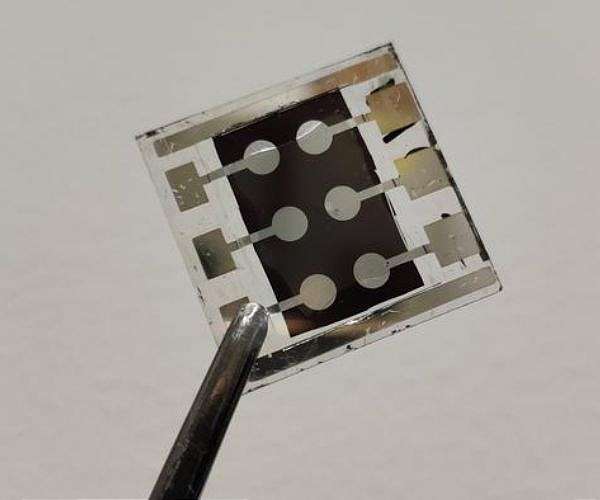Improved polymer additive improves perovskite solar cells
Perovskite solar cells, known for their lightweight and flexible nature, are cheap and easy to manufacture. They are seen as a promising technology that can be attached to various surfaces. However, these solar cells currently lack durability and efficiency. New research highlights how adding a polymerized ionic liquid to the metal halide perovskite material can improve their performance, potentially enabling wider adoption of perovskite solar cells.
“The commonly used solution processing method for fabricating perovskite layers introduces many defects into both the bulk and surface of the perovskite layer. These intrinsic defects within the perovskite absorption layer pose a significant limitation on the overall performance of the devices. Additive engineering has been shown to be effective as a strategy for defect passivation and performance improvement in perovskite solar cells,” said Qi Cao, a researcher at Northwestern Polytechnical University in Xi’an, China.
Researchers improve the properties of ionic liquids by creating polymerized versions. In this study, they synthesized a polyionic liquid called poly4-styrenesulfonyl (trifluoromethylsulfonyl) imidepyridine (PSTSIPPyri).
The addition of PSTSIPPyri to the perovskite solar cell helps prevent migration of halide ions, maintains the crystal structure and improves the stability of the solar cell by fixing organic and halide ions.
“Until now, researchers have paid significant attention to the painstaking selection of additives that improve the performance of perovskite solar cells. Of these, ionic liquids have received wide attention. Ionic bonds in ionic liquids tend to be stronger and more stable, and they offer various tunable properties, including viscosity, polarity and conductivity,” said Xuanhua Li, researcher at Northwestern Polytechnical University “This tunability makes it possible to fine-tune the ionic liquid properties to meet the specific requirements of the perovskite film, optimizing the device performance. .”
Testing of the PSTSIPPyri additive involved aging of perovskite films for 300 hours at 85°C and 60% relative humidity. The enhanced perovskite film showed a slower rate of change than the control film. It also retained 84.5% of its efficiency after 1000 hours in a high humidity, high heat environment, compared to 43.6% for the control.
Long-term durability testing showed that the perovskite solar cell with PSTSIPPyri retained 87.6% of its energy conversion efficiency after 1,500 hours of continuous light, while the control retained only 61.1%.
“Incorporating PSTSIPPyri as an additive significantly improves the energy conversion efficiency of inverted perovskite solar cells from 22.06% to 24.62%. They also exhibit excellent long-term operational stability,” Cao said. “This strategy illustrates the potential of polyionic liquids as a promising additive for perovskite solar cells, offering both high performance and stability.”
Other contributors include Xingyuan Chen, Tong Wang, Jiabao Yang, Xingyu Pu, Hui Chen, Bingxiu Xue, and Jianbo Yin at Northwestern Polytechnical University in Xi’an, China; Long Jiang of the CNPC Tubular Goods Research Institute in Xi’an, China.
Research report:Efficiency improvement up to 24.62% in inverted perovskite solar cells through poly(ionic liquid) bulk modification


